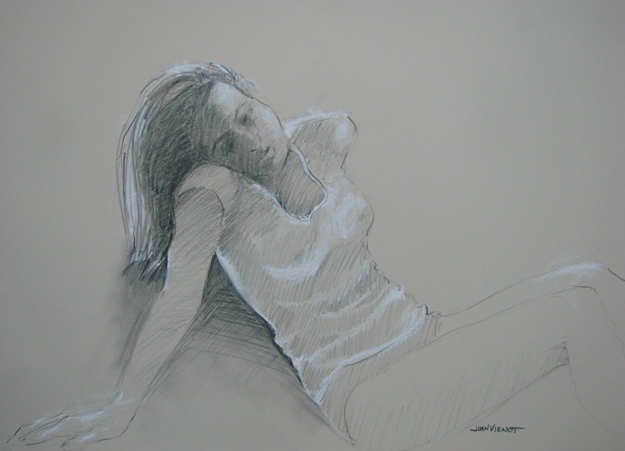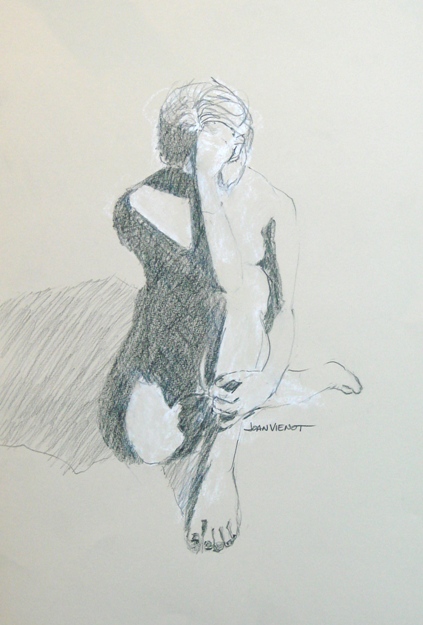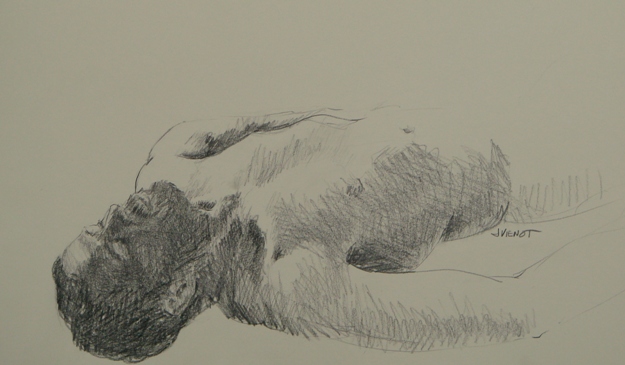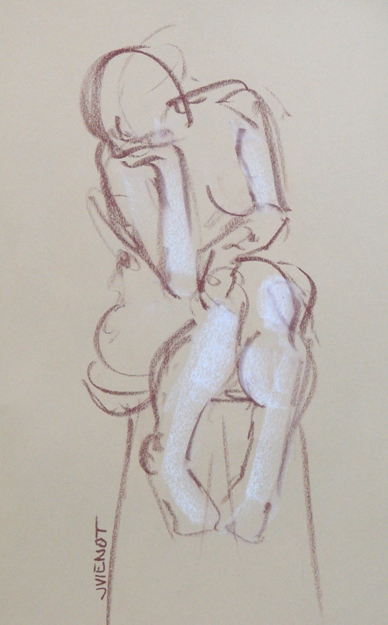

 Modeling for figure drawing is a hard job. Try sitting still in a posed body position for only 5 minutes, and then try it for 25 minutes, and you will see what I mean. Even seemingly-relaxed poses, even reclining poses, can become torturous. Our model at Studio b. this week is a an experienced professional. His poses are rock solid, with no sinking, from beginning to end, from head to foot. Fresh out of a boot for a repaired Achilles tendon, our model first performed 5 1-minute poses and then we graduated to longer poses and the final drawing was about 45 minutes.
Modeling for figure drawing is a hard job. Try sitting still in a posed body position for only 5 minutes, and then try it for 25 minutes, and you will see what I mean. Even seemingly-relaxed poses, even reclining poses, can become torturous. Our model at Studio b. this week is a an experienced professional. His poses are rock solid, with no sinking, from beginning to end, from head to foot. Fresh out of a boot for a repaired Achilles tendon, our model first performed 5 1-minute poses and then we graduated to longer poses and the final drawing was about 45 minutes.
The model challenged us later in the session, by posing with a picture frame as a prop. Props hugely increase the challenge of figure drawing. I drew the figure first, and then placed the picture frame. Ideally, I would have drawn both at the same time, as a whole unit, because there were interesting negative shapes created by the frame. But I was being cautious, having drawn this same model with this same frame but in a different pose, sometime last year, and having had trouble with the proportions at that time. My drawing with the frame is more correct this time.
 |
 |
Our instructor, Heather Clements, has often suggested to me that I vary the direction of my pencil strokes to help convey the rounded form of the figure. I rarely remember to use that technique. I usually just draw the value patterns of light and shadow to express form, rather than changing the direction of my pencil strokes. But on the final drawing of the night, the model stood with one knee advancing towards me. I varied the direction of my pencil strokes to show the rounded form of that thigh and knee, and I think it was successful. As a result,the sense of mass in his left thigh is much stronger than for example, his upper right arm, which I drew as one mass, with pencil strokes all going the same direction.
Most of my images are available for purchase. Contact me if you are interested. — Joan Vienot
































